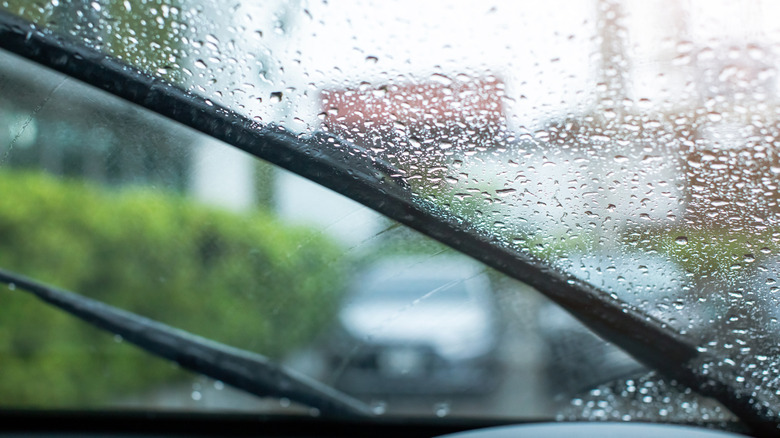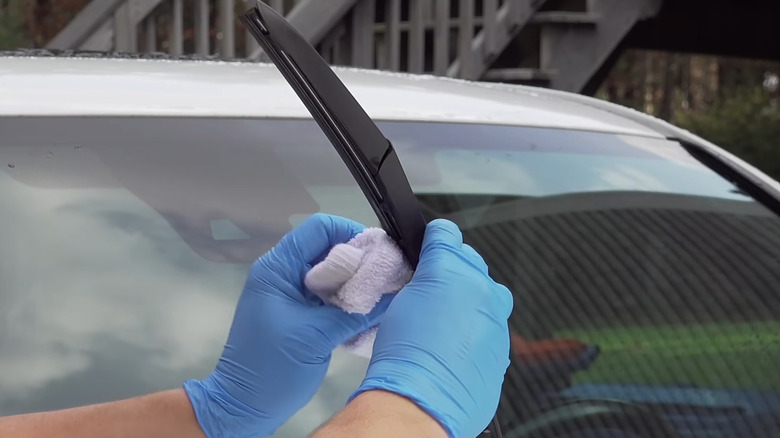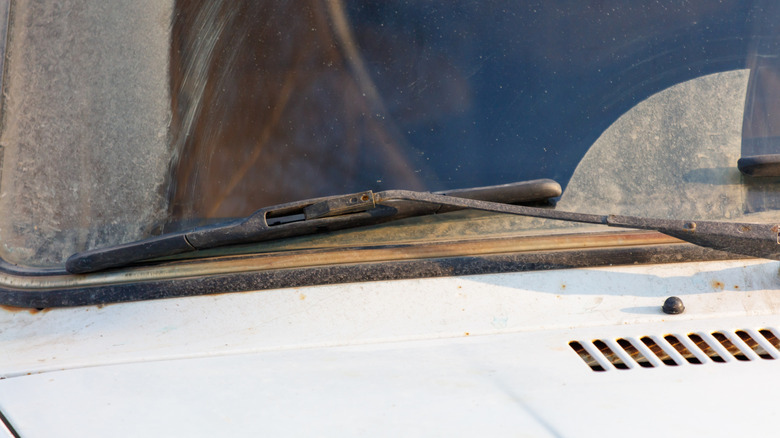How To Make Your Old Windshield Wipers Work (Almost) Like New
Windshield wipers may perform a simple function but an undeniably crucial one. Without them, the natural world would do a number on your windshield, caking it with water, dirt, pollen, and any other debris that comes its way. On top of giving your car an unsightly look, this obviously creates a great deal of danger by making it near impossible to view the road ahead.
As a result, it pays to take good care of your wipers. Even so, they won't last forever. Over time, they'll wear thin and degrade in quality, ironically making your windshield even harder to see through by leaving behind harsh streaks and scratches. While replacing your windshield wipers – either on your own or through a professional — is the best overall option, it may not be the most convenient option for you at the moment, whether due to time or money. Thankfully, this isn't the only road you have to go down.
Making your windshields work effectively once again in the appropriate scenario is a surprisingly simple procedure. All it takes is a bit of time and some simple materials that you likely already have around the house. Keep reading to learn how to do this — as well as when more serious actions are necessary.
How to freshen up old windshield wipers
If your windshield wipers are showing normal signs of wear such as streaking, bringing life back into them isn't all that difficult. To start you'll need a rag with some level of texture, such as a microfiber cloth or even an old sock. Napkins or paper towels can also be used in a pinch, but they may not be as efficient. The most important component you'll need, however, is either WD-40 or rubbing alcohol, which will do wonders in restoring the functionality and freshness to your blades. And while not entirely necessary, a quality glass cleanser designed to work with windshields can add an extra sheen while further aiding in preserving your blades.
With all that out of the way, here's what you'll do:
- Soak a rag or sock with a large helping of WD-40 or rubbing alcohol.
- Raise your wiper blades so that they are standing upright.
- Give your blades a thorough wipe with the WD-40 soaked cloth, going up and down the blade to ensure you collect as much residue as possible.
- Once your swipes with the rag are clear, you can place your blades back in their resting position.
- To give the job an extra polish, spritz your windshield with car glass-appropriate cleanser to remove any gunk that may be on the glass itself that would otherwise get back on the blades.
This is the simplest way to freshen up your windshield wiper blades, taking only a few minutes and costing nothing if you already have the supplies. But just as important as knowing how this technique works is knowing when it won't work.
When to take more extreme actions with your wiper blades
While the simple combination of a rag and WD-40 can do wonders for your windshield's lifespan, it's not a long-term solution. Your wiper blades will continue to wear thin and be less effective as time goes on, which can be amplified depending on how often you use them. Environmental triggers can also do a number on your blades as extreme weather and temperatures can rapidly diminish their quality. Given the crucial role these blades play in keeping you safe on the road, knowing what to look out for and how to address bigger problems is essential.
The aforementioned technique only applies to blades experiencing moderate wear, such as those leaving behind streaks or making squeak noises, as those are usually symptoms of buildup that can be cleaned off. The true problem comes about if the blade itself starts showing visible physical signs of age. Tangible defects such as cracks, hanging rubber, splits, or chunks are major red flags that you need to install new wiper blades as soon as possible.
It's generally recommended to change out your blades every six months to a year, but keeping an eye on their overall quality and the conditions they're exposed is the best way to gauge what you need and when. Additionally, practicing simple habits, such as avoiding parking your car in direct sunlight, ensuring icy blades are thoroughly thawed before use, and never using them on a dry windshield, can go a long way in preventing problems from arising.


